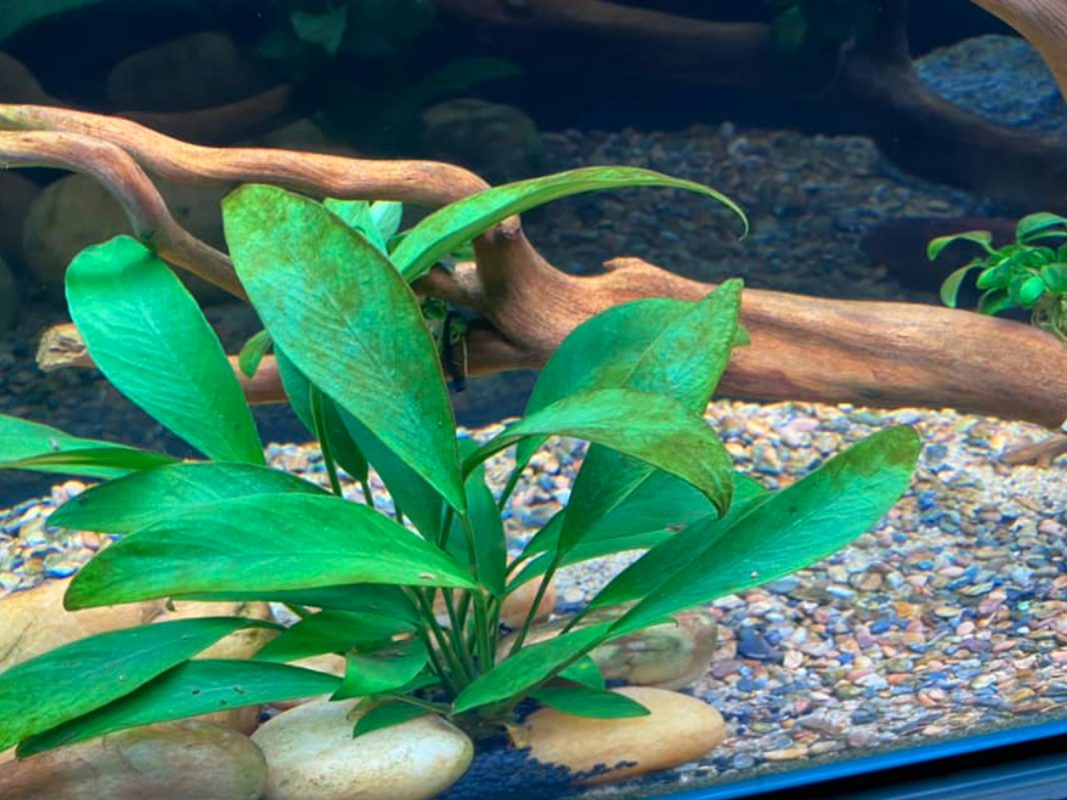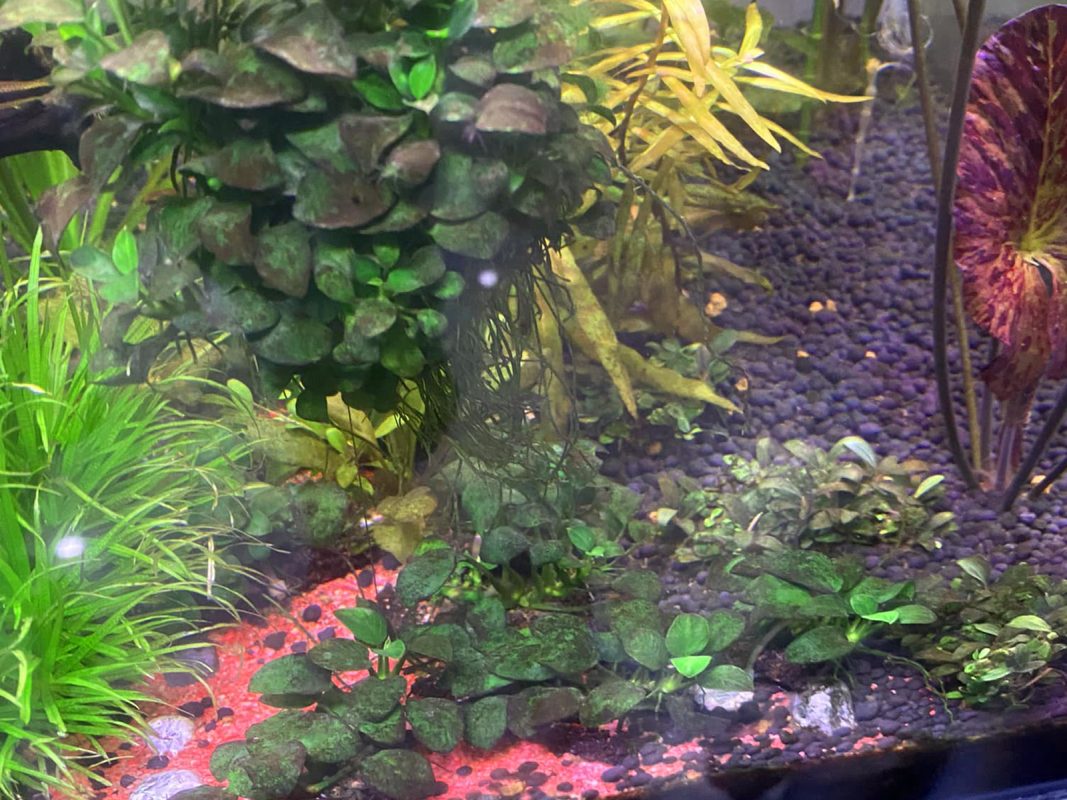Blogs
Brown Algae in Fish Tanks – Causes and treatments
Aquariums are miniature ecosystems that often mimic the diversity of life found in nature. One of the key challenges in maintaining an aquarium is managing unwanted algae growth, with brown algae being a common culprit. Brown algae, also known as diatoms, can quickly turn a crystal-clear tank into a murky mess. This article delves deep into brown algae, its causes, whether it’s harmful, and how to control it. We’ll also explore brown algae eaters that can help maintain a clean tank.
Brown Algae in Fish Tanks
What is Brown Algae?
Brown algae, or diatoms, are single-celled organisms that thrive in water. These tiny algae are unique in their structure, featuring silica shells that give them their characteristic brown or golden-brown hue. Under the microscope, they appear as intricate and beautiful structures, almost like microscopic artworks.
These algae are ubiquitous in natural water systems and can rapidly colonize aquariums, especially those that are newly set up. They tend to form a thin film over aquarium surfaces, including the glass, gravel, decorations, and plant leaves. This coating can be quite unsightly, making the water appear dirty even though it isn’t necessarily harmful to the fish or other aquatic inhabitants.
Causes of Brown Algae
The causes of brown algae proliferation in fish tanks are multifaceted, often involving several factors:
- High Levels of Silicates: Silicates can enter the aquarium from various sources, including tap water, substrates like sand, and certain additives. Diatoms use these silicates to form their silica shells.
- Nitrate Buildup: Excessive nitrates, stemming from fish waste and uneaten food, can create a nutrient-rich environment conducive to diatom growth.
- Immature Aquariums: New tanks often experience brown algae outbreaks as they go through the cycling process. The nitrogen cycle is still being established, and plants haven’t had a chance to take root and compete for nutrients.
- High Lighting Levels: Diatoms can quickly take advantage of high lighting levels, especially if the tank is exposed to prolonged periods of light.
- Phosphate Imbalances: Imbalances in phosphate levels can also contribute to brown algae growth. Phosphates can accumulate from fish food, plant fertilizers, and even from tap water.
Identifying the root cause of brown algae in a specific aquarium can be challenging, but understanding these common triggers can help in formulating an effective management strategy.
Is Brown Algae Harmful?

While brown algae are not directly harmful to fish, shrimp, or other aquarium inhabitants, they can have several indirect negative effects:
- Impeding Photosynthesis: Brown algae can block light from reaching aquarium plants. Since plants need light for photosynthesis, this light blockage can lead to plant decline over time.
- Smothering Plants: The thick, slimy coating of diatoms can smother plant leaves, hindering their growth and even causing them to die.
- Aesthetics and Ecosystem Balance: A large bloom of brown algae can make the aquarium appear unsightly and may disrupt the balance of the ecosystem by outcompeting other organisms for nutrients and light.
To maintain a healthy and visually pleasing aquarium, it’s essential to manage brown algae growth effectively.
Removing Brown Algae
Getting rid of brown algae requires a combination of manual removal, improving water quality, and maintaining proper lighting conditions:
- Manual Scrubbing: Use a soft brush or cloth to scrub off the algae from surfaces such as the glass, decorations, and plant leaves. Regular scrubbing can prevent the algae from becoming too entrenched.
- Vacuuming the Substrate: Diatoms can settle on the substrate, so it’s crucial to thoroughly vacuum the gravel or sand to remove built-up debris.
- Regular Water Changes: Perform partial water changes regularly (10-20% every 1-2 weeks) to dilute excess nutrients like nitrates and phosphates.
- Improving Water Flow: Enhance water circulation using a water pump or powerhead. Better flow can prevent dead spots where algae might accumulate.
- Adjusting Lighting: Reduce the duration of the lighting period to 8-10 hours per day. Ensure that the lighting is not too intense, as high lighting can promote algae growth.
How to Prevent Brown Algae
Preventing brown algae involves maintaining good aquarium husbandry and addressing factors that contribute to diatom outbreaks:
- Monitor and Control Nutrient Levels: Regularly test water parameters for nitrates and phosphates. If levels are high, take steps to reduce them through water changes, using phosphate-absorbing media, or adjusting feeding routines.
- Avoid Overfeeding: Uneaten food can contribute to nitrate buildup, so feed your fish only what they can consume within a few minutes.
- Use RO Water: Consider using reverse osmosis (RO) water for water changes, as it contains fewer impurities like silicates and phosphates.
- Introduce Algae-Eating Species: Adding animals like Siamese algae eaters, bristlenose plecos, Amano shrimp, and nerite snails can help keep algal populations in check.
- Regular Maintenance: Consistently clean the tank and its components, vacuum the substrate, and maintain the filter.
By combining these strategies, aquarium owners can successfully control and prevent brown algae outbreaks, ensuring a healthy, vibrant aquatic environment.
Brown Algae Eaters
Introducing algae-eating fish and invertebrates can be a highly effective way to control brown algae. These species not only keep algae levels down but can also add diversity and interest to the aquarium.
Bristlenose Plecos
Bristlenose Plecos, scientifically known as Ancistrus, are among the most effective algae eaters.
Physical Characteristics:
- Size: They typically grow to about 4-5 inches in length.
- Appearance: These fish are named for the bristle-like appendages on their faces, which are more pronounced in males.
Habitat Requirements:
- Tank Size: At least 30-40 gallons.
- Water Parameters: pH 6.5-7.5, temperature 72-86°F.
- Tank Setup: They thrive in tanks with plenty of hiding spots, such as caves and driftwood.
Feeding:
- Diet: Primarily herbivorous, they consume substantial amounts of brown algae and also enjoy vegetable matter like zucchini and spinach.
- Supplements: Algae wafers can be given as supplemental food.
Temperament:
- Behavior: Generally peaceful, but males can be territorial.
- Tank Mates: Compatible with other community fish like tetras and guppies, but avoid keeping multiple males together.
Breeding:
- Reproduction: Easy to breed if proper conditions are provided. They are cave spawners.
Bristlenose Plecos are a great choice for aquarists looking to add a hardy, algae-eating fish to their community tanks. Their unique appearance and effective algae-clearing abilities make them a popular choice.
Otocinclus Catfish
Otocinclus catfish, commonly referred to as “Otos,” are small, industrious cleaners well suited for combating brown algae.
Physical Characteristics:
- Size: 1.5-2 inches.
- Appearance: Characterized by a dark grayish-brown back, black horizontal line, and white belly.
Natural Habitat:
- Origin: Native to South America, found in rivers and streams with dense vegetation.
Aquarium Requirements:
- Tank Size: Minimum 10 gallons, but larger tanks are preferred for groups.
- Water Parameters: Temperature 72-79°F, pH 6.0-7.5.
- Setup: Heavily planted tanks with plenty of hiding spots are ideal.
Diet:
- Primary Diet: Brown algae and biofilm.
- Supplementary Foods: Algae wafers, spirulina flakes, and blanched vegetables like zucchini or spinach.
Behavior:
- Temperament: Peaceful and non-aggressive, making them suitable for community tanks.
- Tank Mates: Best kept with small, peaceful fish like tetras and rasboras; avoid large or aggressive species.
Otocinclus catfish are excellent at keeping brown algae in check, and their peaceful nature makes them a perfect addition to community aquariums.
Nerite Snails
Nerite snails are some of the most efficient algae eaters available to aquarists.
Characteristics:
- Appearance: Known for their beautiful, patterned shells.
- Size: Typically around 1 inch in diameter.
Feeding Habits:
- Diet: Primarily consume various types of algae, including tough ones like brown algae, green algae, and green spot algae.
- Supplements: Can be fed algae wafers, blanched vegetables, and commercial snail foods to ensure a varied diet.
Habitat:
- Tank Requirements: At least 10 gallons.
- Water Parameters: Prefer water with higher hardness to maintain their shells.
Additional Benefits:
- Compatibility: Peaceful and can be kept with most community fish.
- Maintenance: Require minimal care and contribute significantly to cleaning efforts.
Nerite snails are particularly effective against brown algae and are a valuable addition to any aquarium’s cleanup crew.
Amano Shrimp
Amano shrimp, or Caridina multidentata, are renowned for their algae-eating capabilities.
Characteristics:
- Size: Typically 2-3 inches.
- Appearance: Translucent bodies with a distinctive row of dots or dashes along their sides.
Feeding:
- Diet: Consume a variety of algae types, including brown algae, green algae, and even the stubborn black beard algae. However, they do not consume blue-green algae (cyanobacteria).
- Limitations: Unable to scrape algae directly from the glass but will eat algae that has accumulated.
Aquarium Setup:
- Tank Size: Minimum 10 gallons.
- Water Parameters: Thrive in a wide range of conditions but prefer stable, well-maintained systems.
Behavior:
- Temperament: Peaceful and social, making them great additions to community tanks.
- Feeding: To encourage algae consumption, limit access to other foods. Supplement their diet occasionally to ensure proper nutrition.
Amano shrimp are versatile and effective algae eaters, making them an excellent choice for controlling brown algae in aquariums.
Hillstream Loaches
Hillstream Loaches are another effective species for controlling brown algae.
Physical Characteristics:
- Size: Generally 2-3 inches.
- Appearance: Streamlined body with a flattened underside, adapted to cling to surfaces in fast-flowing waters.
Habitat Requirements:
- Tank Size: At least 50 gallons.
- Water Parameters: Temperature 68-75°F, pH 6.5-7.8.
- Setup: Require well-oxygenated, fast-flowing tanks with plenty of smooth rocks and driftwood.
Feeding:
- Diet: Consume a variety of algae, including brown diatoms, but require a varied diet including vegetables, algae wafers, and occasional protein.
- Compatibility: Prefer peaceful, small community fish. Aggressive tank mates can stress them.
Hillstream Loaches are effective brown algae eaters but need specific water conditions and care to thrive.
“Pest” Snails
“Pest” snails, despite their bad reputation, can sometimes be beneficial in controlling algae.
Types:
- Common Varieties: Bladder snails, ramshorn snails, and Malaysian trumpet snails.
- Size: Generally small, with different species ranging from a few millimeters to over an inch.
Pros and Cons:
- Benefits: These snails can help to control brown algae and other detritus in the tank, contributing to a cleaner environment.
- Drawbacks: They can reproduce quickly and become overpopulated, potentially necessitating manual removal or population control measures.
In summary, while often seen as nuisances, “pest” snails can play a beneficial role in managing brown algae under controlled conditions.
Maintaining an aquarium is like orchestrating a symphony; each component, from lighting to filtration to algae eaters, plays a critical role. By understanding the nature of brown algae and implementing strategies to control it, aquarium owners can ensure a thriving, beautiful aquatic environment. Each of the algae-eating species discussed here offers unique advantages, and integrating them appropriately can lead to a balanced, algae-free tank.

